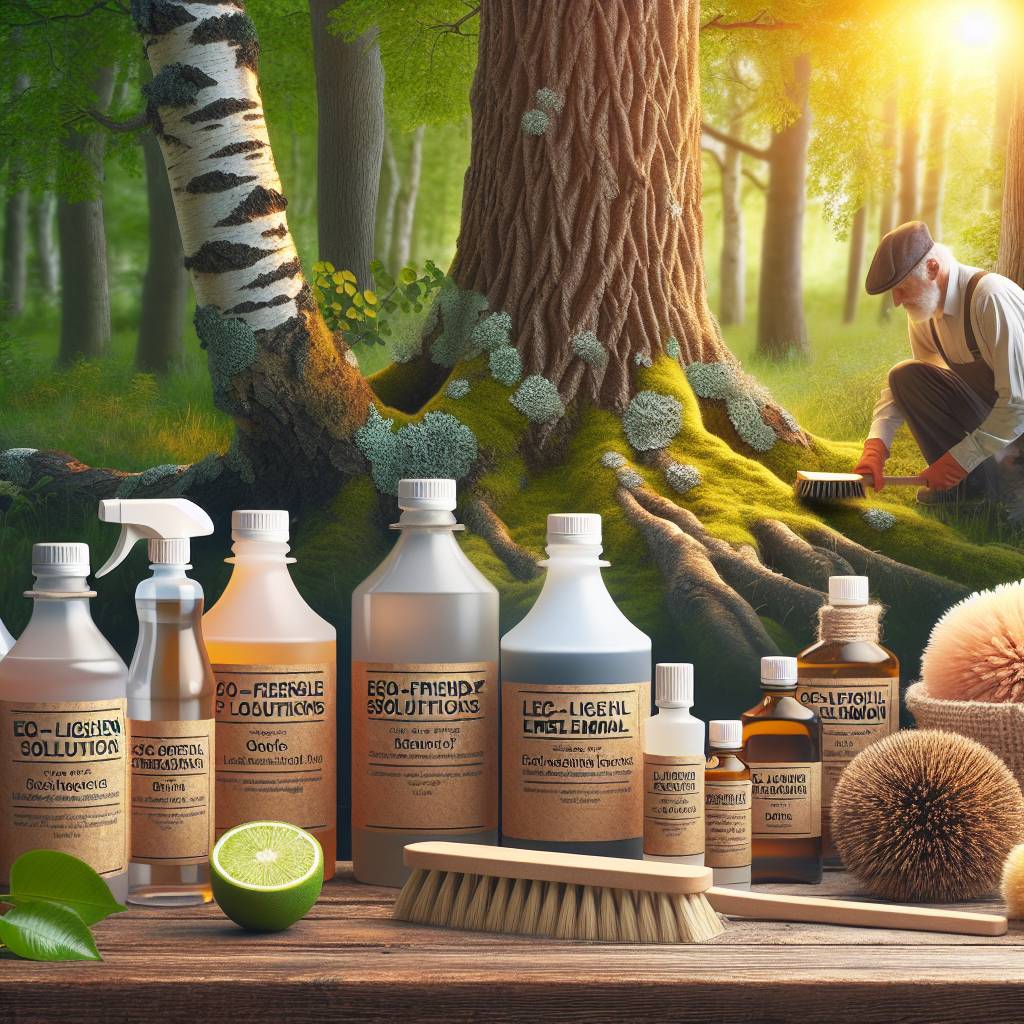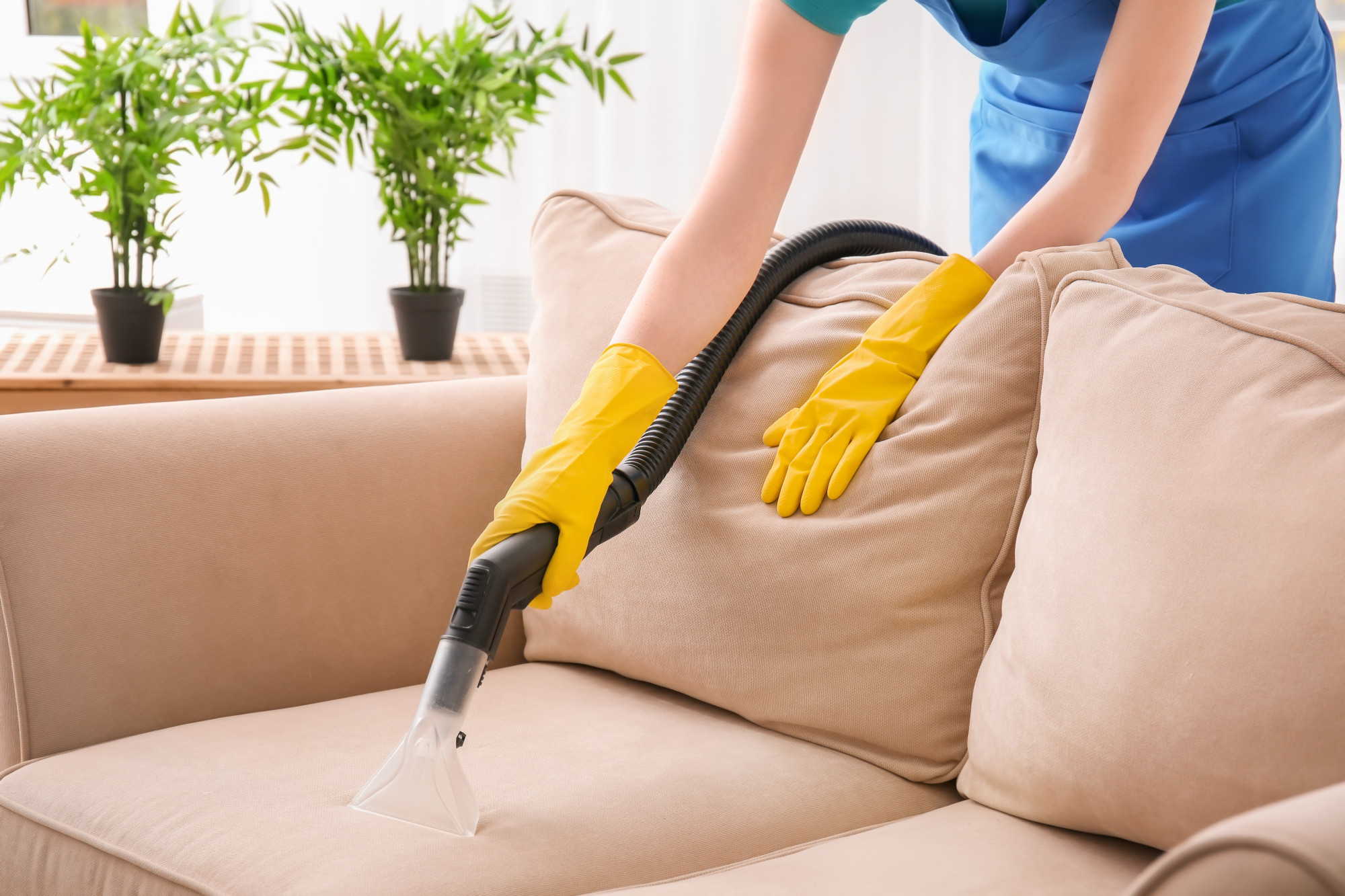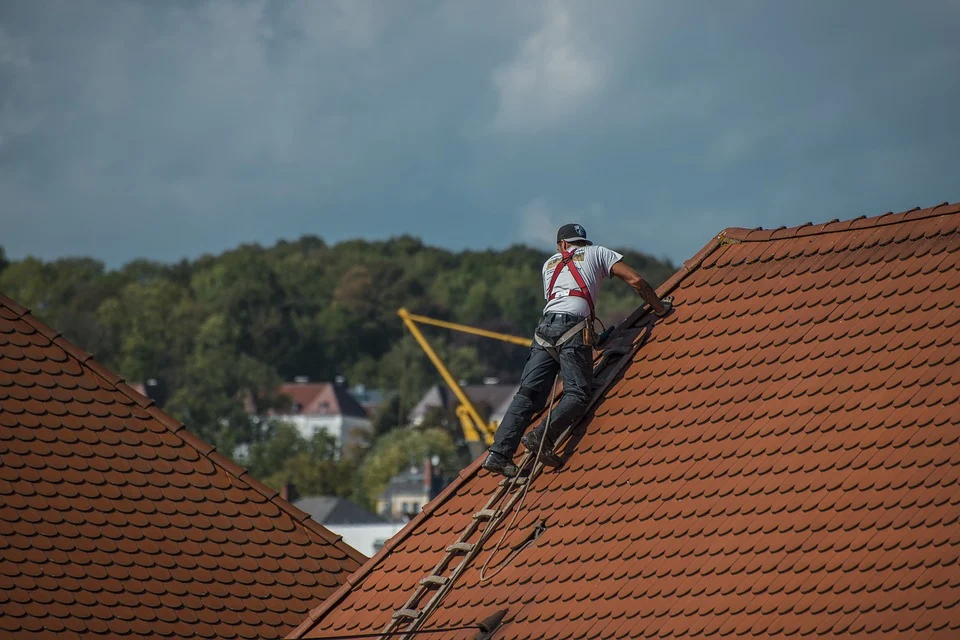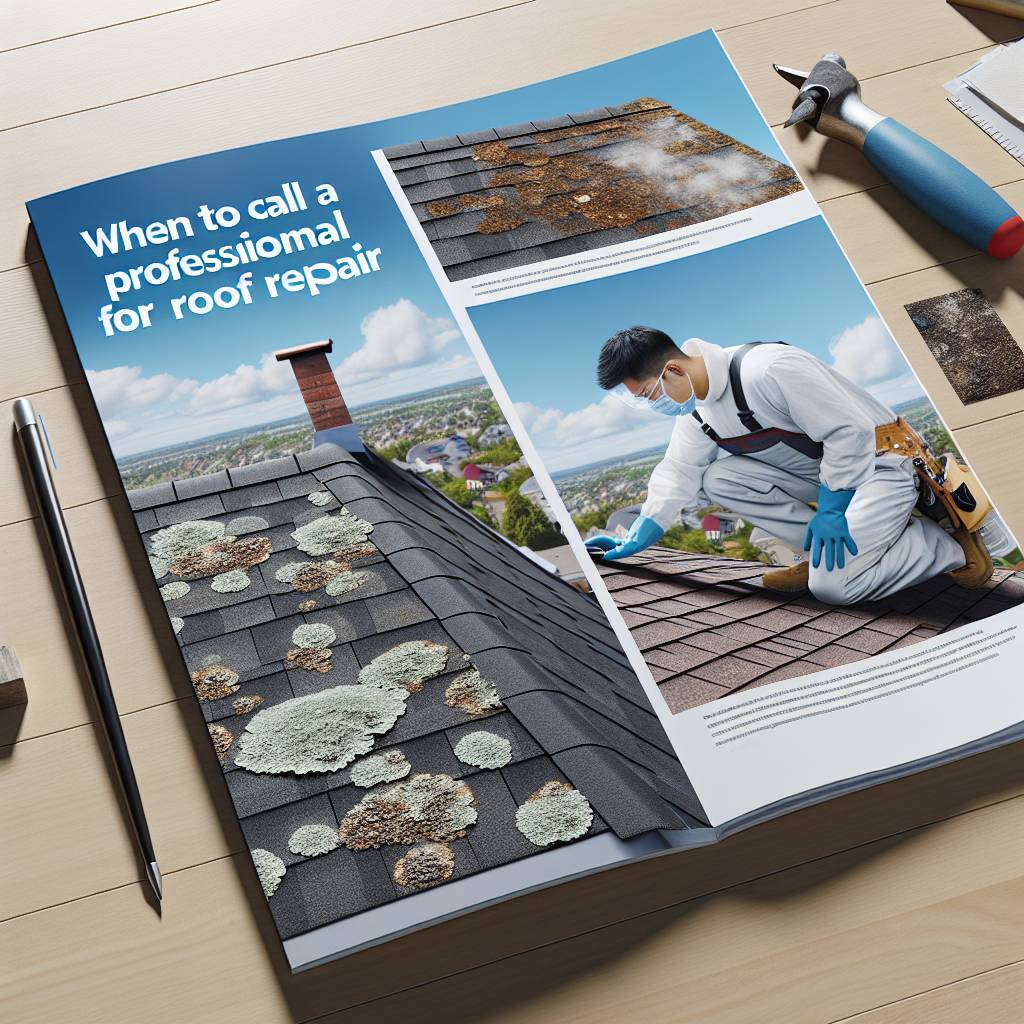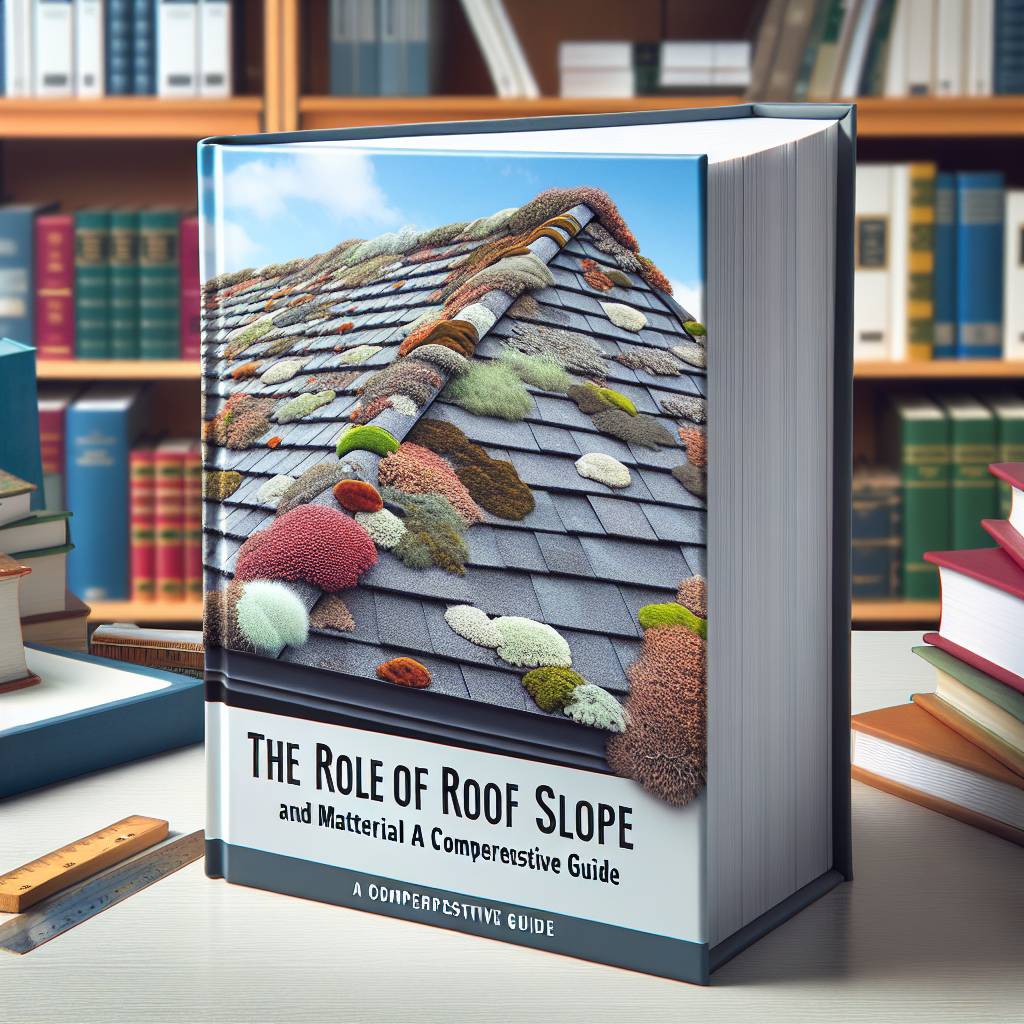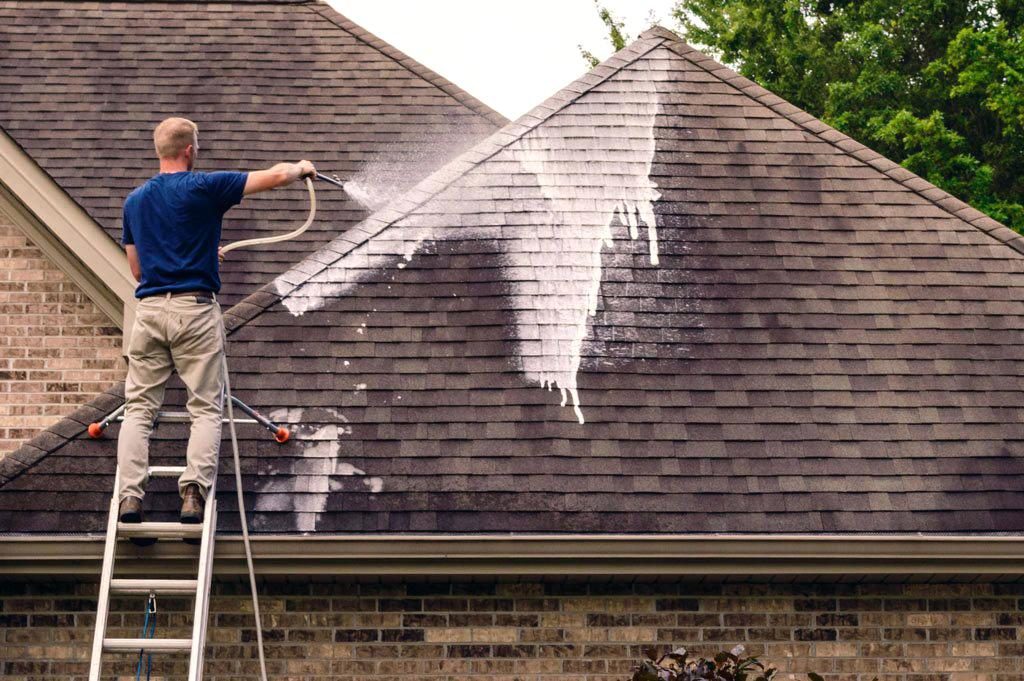Looking to rid your home roof of stubborn lichen without harming the environment? Discover eco-friendly lichen removal solutions that are safe for both your home and the planet. We’ll explore effective methods, products, and techniques designed to tackle lichen growth while maintaining environmental responsibility. Say goodbye to harsh chemicals and hello to sustainable alternatives that promote a healthier ecosystem around your property and house.
Whether you’re dealing with unsightly patches on your house or concerned about preserving the natural balance of lichens, these eco-conscious approaches offer a compelling solution. Let’s delve into the world of eco-friendly lichen removal and pave the way for a greener, cleaner roofscape.
Key Takeaways
- Regularly inspect your roof to understand moss and lichen growth patterns, and take proactive measures to prevent their accumulation.
- Use eco-friendly methods and products, such as vinegar solutions or manual cleaning techniques, to safely remove moss and lichen from your roof without harming the environment.
- Green roof cleaning techniques not only enhance the aesthetic appeal of your home but also contribute to environmental conservation by preserving the natural balance.
- Prevent potential damage to your home’s roof by addressing moss and lichen growth promptly, thus avoiding costly repairs in the future.
- Clearing roof vegetation not only improves the appearance of your home but also enhances its energy efficiency by reducing heat retention and promoting better insulation.
- By implementing preventive strategies and using eco-friendly removal products, you can maintain a moss and lichen-free roof while minimizing the impact on the environment.
Understanding Moss and Lichen Growth on Roofs
Causes of Moss and Lichen Growth
Moss and lichen thrive on roofs due to the combination of moisture and shade. When a roof doesn’t receive enough sunlight, it creates the perfect environment for lichens to grow. Areas with high humidity or frequent rain provide the necessary moisture for moss and lichen to flourish. These conditions allow spores from mosses and lichens to settle on the roof’s surface, leading to their growth over time.
Moss can be particularly damaging as it retains water, which can seep into cracks in roofing materials, causing them to deteriorate over time. Similarly, lichen growth can also cause damage by penetrating the outer layer of shingles or tiles. This is why understanding these factors that contribute to their growth is crucial for homeowners who want an eco-friendly solution for removing them.
Prevention Methods
To prevent moss and lichen from growing on your roof, you should ensure that your gutters are clean so that water drains properly off the roof. Trimming back overhanging tree branches will also help increase sunlight exposure on your roof, reducing dampness caused by shade.
Another preventive measure involves using zinc or copper strips along the ridge of your roof. These metals release ions when they come into contact with rainwater, creating an inhospitable environment for mosses and lichens without harming other parts of your home or garden.
Moreover, choosing roofing materials resistant to moss and lichen growth could be beneficial in preventing future infestations. For instance, metal roofs have been found less prone to moss accumulation due to their slippery surfaces compared with asphalt shingles.
Eco-Friendly Removal Solutions
.
Eco-Friendly Methods for Removing Roof Lichen and Moss
Natural Ingredients
Using natural ingredients instead of harsh chemicals is crucial. These natural alternatives are not only safer for the environment but also gentler on the roof’s surface. For example, a mixture of water and vinegar can effectively remove lichen without posing any harm to the surrounding ecosystem. By opting for natural ingredients, homeowners can ensure that their efforts to remove lichen do not have negative repercussions on the environment.
Gentle Removal Techniques When dealing with lichen and moss on roofs, employing gentle brushing or scraping techniques is essential in preventing damage. Instead of resorting to aggressive methods that might compromise the integrity of the roof, gently brushing off these growths ensures that both the roof and its surrounding environment remain unharmed. This approach allows homeowners to effectively tackle lichen while safeguarding their roofing materials from potential harm.
Eco-Friendly Biocides
Applying eco-friendly biocides offers an effective way to prevent regrowth of lichen without causing harm to the environment. These biocides are specifically formulated to target organic growth like moss and lichen while being environmentally safe. By using eco-friendly biocides, homeowners can proactively address recurring issues with lichen on their roofs without introducing harmful substances into their local ecosystems.
Environmental Benefits of Green Roof Cleaning Techniques
Minimizing Harmful Chemical Use
Using eco-friendly lichen removal solutions for home roofs minimizes the use of harmful chemicals. Instead of relying on strong, toxic substances, these methods utilize natural ingredients that are safe for the environment. For example, a mixture of water and vinegar can effectively remove lichen without posing any risk to plants or animals.
Some commercial eco-friendly products contain biodegradable ingredients that break down naturally without causing harm to the ecosystem. These alternatives not only protect the environment but also ensure the safety of pets and wildlife in residential areas.
Improving Air Quality
Removing moss and lichen from roofs plays a crucial role in improving air quality by reducing spore release. When left unaddressed, moss and lichen can release airborne spores into the atmosphere, contributing to pollution and potentially triggering respiratory issues in humans and animals. By using green roof cleaning techniques, homeowners can significantly reduce this environmental impact.
For instance, gentle brushing or scraping techniques paired with environmentally friendly cleaning agents prevent spores from being dispersed into the air during removal. This approach helps maintain cleaner air quality around homes while safeguarding respiratory health for everyone in the vicinity.
Protecting Ecosystems
Eco-friendly lichen removal methods play a vital role in protecting ecosystems by preventing contamination of plants, animals, and water sources. Traditional chemical-based treatments pose a risk to surrounding vegetation when they run off rooftops during rainstorms or watering sessions. In contrast, environmentally conscious approaches prioritize preserving local flora and fauna.
For example, utilizing organic compounds like baking soda or hydrogen peroxide not only removes lichen effectively but also ensures that runoff does not harm nearby plants or seep into water bodies such as ponds or streams. This proactive measure safeguards biodiversity within residential areas while promoting sustainable living practices.
By employing green roof cleaning techniques that minimize chemical usage, improve air quality by reducing spore release from moss and lichen growths on roofs, and protect ecosystems from contamination, homeowners can contribute positively to environmental conservation efforts while maintaining clean properties.
Preventing Damage from Moss and Lichen on Home Roofs
Regular Maintenance and Cleaning
Regular maintenance and cleaning of home roofs are crucial in preventing moss and lichen from causing structural damage. By keeping the roof clean, you can stop these organisms from taking root and thriving. Removing debris such as leaves, twigs, and other organic matter can eliminate potential habitats for moss and lichen to grow. Regular cleaning with eco-friendly solutions can discourage their growth.
Addressing Leaks or Moisture Promptly addressing any leaks or areas of moisture is essential in discouraging the growth of moss and lichen on home roofs. Any form of moisture accumulation creates a conducive environment for these organisms to thrive. By identifying leaks early on and fixing them promptly, you prevent the conditions that allow mosses and lichens to colonize your roof.
Installing Zinc or Copper Strips
Installing zinc or copper strips on the roof is an effective method to inhibit mosses’ colonization. These metals create an inhospitable environment for mosses by releasing metal ions when they come into contact with rainwater runoff. This process hinders the growth of both moss and lichens without causing harm to the environment.
Enhancing Energy Efficiency by Clearing Roof Vegetation
Trapping Moisture and Increased Energy Consumption
Moss and lichen on roofs can trap moisture, leading to increased energy consumption. When these plants grow on the roof, they create a damp environment that can seep into the attic or upper levels of the house. The trapped moisture makes it harder for your home to maintain a consistent temperature, causing your heating and cooling systems to work overtime.
Removing this vegetation is crucial in preventing excessive energy usage. By doing so, you eliminate the source of trapped moisture, allowing your home’s insulation to function optimally without being compromised by unwanted plant growth.
Improved Insulation and Better Solar Reflectance
Clearing moss and lichen from your roof doesn’t just prevent damage; it also enhances your home’s energy efficiency. Without these plants, your roof’s insulation remains intact, reducing heat loss during winter months and minimizing heat gain in summer. This means lower heating and cooling costs for you throughout the year.
Moreover, a clean roof allows for better solar reflectance. Instead of absorbing heat from sunlight due to overgrown vegetation, a clear surface reflects more sunlight away from the house. This reflective property helps maintain cooler indoor temperatures during hot weather without relying heavily on air conditioning.
Types of Eco-Friendly Moss and Lichen Removal Products
Vinegar-Based Solutions
Vinegar-based solutions offer an effective and natural way to eliminate moss and lichen from home roofs. The acetic acid in vinegar works as a powerful agent, effectively killing the unwanted vegetation without causing harm to the environment. This eco-friendly approach is particularly appealing for homeowners looking to maintain a green lifestyle while preserving the integrity of their roofs. By using vinegar-based solutions, individuals can tackle moss and lichen issues without resorting to harsh chemicals or toxic substances.
One example of a vinegar-based solution is a mixture of white vinegar and water sprayed directly onto the affected areas. The acidity of the vinegar swiftly breaks down the moss and lichen, making it easier to remove them from the roof’s surface. This method not only provides an environmentally friendly alternative but also ensures that no harmful residues are left behind after treatment.
Biochemical Cleaners with Enzymes
Biochemical cleaners containing enzymes present another promising option for addressing moss and lichen growth on home roofs. These products work by breaking down organic matter through enzymatic action, effectively dissolving moss and lichen without posing any threat to the surrounding ecosystem. Homeowners can utilize these cleaners with confidence, knowing that they are actively contributing to environmental preservation while maintaining their property.
An example of a biochemical cleaner with enzymes is a specially formulated spray designed to target moss and lichen infestations on various surfaces, including roofs. As users apply this solution, its enzymatic components penetrate deep into the vegetation, gradually disintegrating it over time. With regular application according to product instructions, individuals can achieve long-lasting results without compromising environmental safety.
Oxygen Bleach Products
For those seeking non-toxic alternatives for removing moss and lichen from home roofs, oxygen bleach products stand out as viable options. Unlike traditional chlorine bleach compounds that pose risks to plants and animals when rinsed off surfaces, oxygen bleach offers a safer alternative with minimal impact on the environment. By harnessing oxygen ions for cleaning power, these products effectively combat unsightly roof growths while upholding eco-friendly principles.
An example of an oxygen bleach product suitable for roof maintenance is in powder form mixed with water before application onto affected areas like shingles or tiles. Once applied according to manufacturer guidelines, this solution begins working immediately by penetrating deep into moss and lichen colonies before gently loosening them from roofing materials.
DIY Solutions for Lichen and Moss Removal with Vinegar
Vinegar and Water Mixture
Mixing vinegar with water in a spray bottle is an effective method to eliminate moss and lichen from home roofs. The acidic nature of vinegar makes it a potent solution for killing these unwanted growths. By combining one part vinegar with two parts water, you can create an eco-friendly yet powerful concoction that helps to eradicate moss and lichen.
This mixture can be sprayed directly onto the affected areas on the roof. Once applied, the acidic properties of the solution work to break down and kill off the moss and lichen, making their removal much easier.
Direct Application of Vinegar
Applying undiluted vinegar directly to areas affected by moss and lichen can also aid in loosening them from the surface. This direct application serves as a targeted approach to weaken the grip of these growths on your roof, facilitating their subsequent removal.
Moreover, regularly spraying diluted vinegar on your roof’s surface acts as a preventive measure against future moss and lichen development. The acidity of vinegar creates an environment inhospitable for these organisms’ growth, helping to maintain a clean and clear roof over time.
In addition:
- It’s important not to use this method on or near plants that you want to keep alive.
- A liter-sized spray bottle would be ideal for mixing vinegar solutions due to its convenience in handling larger quantities.
Manual Techniques for Gentle Yet Effective Roof Cleaning
Soft-Bristle Brushes or Brooms
Using soft-bristle brushes or brooms is a gentle yet effective way to remove moss and lichen. These tools are ideal for delicately scrubbing away the unwanted growth without causing damage to the roof’s surface. By gently brushing the affected areas, you can effectively loosen and dislodge the lichen, preparing it for removal.
For instance, imagine using a soft-bristle brush to carefully sweep away the moss and lichen from your roof. This manual technique allows you to target specific areas while ensuring that no harsh chemicals harm your roofing material.
Low-Pressure Washer Settings
Another eco-friendly method of cleaning roofs involves utilizing a pressure washer on low settings. When dealing with stubborn moss and lichen, employing a pressure washer at its lowest setting can effectively dislodge and wash away these unwanted growths without causing any harm to the roof’s surface. The gentle force of water helps in rinsing off debris while preserving the integrity of the roofing material.
Consider envisioning how using a pressure washer on low settings effortlessly removes moss and lichen from your roof without causing any damage. This approach ensures thorough roof cleaning while maintaining its durability.
Scraping Off Moss and Lichen Manually
While labor-intensive, manually scraping off moss and lichen is an effective method for achieving a clean roof surface naturally. By physically removing these growths with hand tools like scrapers or putty knives, homeowners can ensure thorough removal without resorting to chemical-laden solutions.
Imagine meticulously scraping off stubborn patches of moss and lichen from your roof by hand—this hands-on approach guarantees comprehensive removal without relying on harmful substances.
Strategies for Preventing Future Moss and Lichen Growth
Trimming Tree Branches
Trimming tree branches near the roof is crucial in preventing stains caused by moss and lichen. When trees cast shadows on the roof, it creates a moist environment that encourages moss and lichen growth. By trimming these branches, you can reduce shade and minimize moisture accumulation on the roof.
This reduction in shade also allows more sunlight to reach the roof. Sunlight helps to naturally inhibit moss and lichen growth by drying out any moisture present on the surface of the shingles or tiles. This simple step can significantly contribute to preventing future moss and lichen infestations on your home’s roof.
Proper ventilation systems are essential for maintaining a dry environment on the roof, which is crucial in inhibiting moss and lichen growth. These systems help regulate temperature and humidity levels within your attic space, preventing excessive condensation that could lead to mold, mildew, or stains from organic growths like moss or lichens.
By ensuring good airflow through your attic with properly installed vents or fans, you create an inhospitable environment for these unwanted organisms. This not only prevents their establishment but also contributes to preserving the integrity of your roofing materials over time.
Regular Roof Inspections
Regularly inspecting and maintaining your roof plays a vital role in identifying potential issues before they escalate into significant problems such as extensive moss or lichen infestations causing unsightly stains. Periodic inspections allow you to catch early signs of damage or deterioration that might lead to conditions favorable for organic growths.
During these inspections, pay close attention to areas prone to accumulating debris or retaining moisture such as valleys between sections of roofing material where leaves tend to gather after falling from nearby trees. Promptly addressing any issues found during these inspections can prevent them from escalating into larger concerns related to moss or lichen development.
Summary
You’ve learned about the impact of moss and lichen on your home’s roof and how eco-friendly solutions can effectively remove them. By using gentle yet powerful techniques and environmentally safe products, you can not only maintain the integrity of your roof but also contribute to a greener environment. These methods not only prevent damage but also enhance energy efficiency, making your home more sustainable. Take action now to protect your roof and the planet by implementing these eco-friendly solutions for moss and lichen removal.
Frequently Asked Questions
How does lichen and moss growth affect the lifespan of a roof?
Lichen and moss can trap moisture, leading to premature deterioration of roofing materials. This can result in costly repairs or even the need for a full roof replacement.
What are some eco-friendly methods for removing lichen and moss from roofs?
Eco-friendly methods include using natural products like vinegar or opting for manual techniques such as gentle brushing. These options effectively remove lichen and moss without harming the environment.
Can clearing roof vegetation contribute to energy efficiency in homes?
Yes, by removing roof vegetation, you can improve energy efficiency. The accumulation of moss and lichen can trap heat, causing higher indoor temperatures during warm weather which increases the need for air conditioning.
Are there DIY solutions available for lichen and moss removal?
Absolutely! Using common household items like vinegar mixed with water is an effective DIY solution. Applying this mixture to affected areas helps eliminate lichen and moss without resorting to harsh chemicals.
What preventive measures can homeowners take against future growth of lichen and moss on their roofs?
Regular maintenance such as trimming overhanging branches, keeping gutters clean, and ensuring proper ventilation on the roof will help prevent future growth of lichen and moss.
